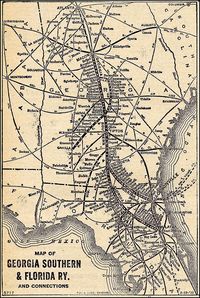The yellow dog decides to catch it: Continue reading
The yellow dog decides to catch it: Continue reading
 Rob Goldstein writes in Conservation Maven:
Rob Goldstein writes in Conservation Maven:
A new study finds that organic farming promotes biodiversity compared to conventional agricultural practices. While past research has found similar results, this particular study is groundbreaking in that it detected ecological benefits from organic farming at both a local and a landscape level.It’s always good to see research validate what we see on the ground (pun intended).Researchers looked at the uncultivated, semi-natural borders between organic and conventional agricultural fields in Sweden. They found that the borders between organic fields had significantly higher plant species richness and abundance. The researchers hypothesize that this is likely due, at least in part, to the unintentional impact that herbicides can have on non-target species.
This is good news and not just for plants. Increases in plant species diversity likely trickle up the food chain benefiting the insects that eat plants (and the birds that eat insects).
So it could get back to digging.
More pictures in the flickr set.
This is the forest primeval.
More on flickr.
Pictures by Gretchen Quarterman, 8 September 2009, Lowndes County, Georgia.
 Dr. Mercola points out that the Obama administration apparently isn’t immune from Monsanto influence:
Dr. Mercola points out that the Obama administration apparently isn’t immune from Monsanto influence:
But while health care reform is finally on the table, and an organic farm has, for the first time, been planted on the White House lawn, there are an unsettling number of foxes being appointed to guard the U.S. health care and food industry hen houses … foxes that have entirely too many connections to Monsanto, the chemical manufacturer turned agricultural giant that is slowly gaining control over the world’s population, one seed at a time.Many more details follow.The New Secretary of Agriculture is a Fan of Factory Farms, GM Crops and More
Former Iowa Governor Tom Vilsack is now the Secretary of Agriculture, an appointment that took place despite massive public outcry. What was needed for an effective Secretary of Agriculture was someone who would develop and implement a plan that promotes family-scale farming and a safe and nutritious food system with a sustainable and organic vision.
What we got was yet another politician who’s already made room in his bed for the industry lobby. As the Organic Consumers Association (OCA) points out:
It’s going to take more than just a new president to break the grip of big agribusiness on government. As FDR said:
I agree with you, I want to do it, now make me do it.
 What happens
when the U.S. pays the Bolivian government to spray Roundup on coca crops as part of the “War on Drugs”?
What happens
when the U.S. pays the Bolivian government to spray Roundup on coca crops as part of the “War on Drugs”?
The effort has lead to coca growers cutting down national forests — where such spraying is often against the law — to produce their illicit crops. But Mother Nature may be rebelling against drug policy as well. coca plants appear to be either evolving on their own (or with the help of coca farmers’ active selection) — or they are possibly crossing with Roundup Ready crops already on the ground — to produce a glyphosate-resistant crop known as Boliviana negra.This doesn’t make the Bolivian government or people happy, nor the U.S. government, but:
…drug growers who do have the new strain certainly don’t want the status quo to end, because currently the U.S. government is doing their weeding for free.What to do?
When you put together the studies referenced above, which show that spraying glyphosate is harmful to humans and the environment and that it does not hamper the production of coca or weeds, the answer to almost everyone’s problems is eliminating Monsanto.To the drug Roundup: just say no.
In his comments, LaHood tried hard not to criticize Georgia policy makers directly. “I’m not going to pretend to tell Georgia what to do,” he said repeatedly.Ain’t that the truth.But rather than criticize the lack of planning and support for high-speed rail in Georgia, he offered examples of regions elsewhere that “get it.” “The Northeast (high-speed rail) corridor has its act together,” LaHood said. “The Midwest corridor has its act together. The governors there have set aside their own egos and their own ambitions” to work together on bringing high-speed rail to those regions.
LaHood made no mention of the stark contrast to the Southeast, where our governors are too busy posturing to discuss resolution of the ongoing water wars, let alone high-speed rail.
The best part is in a comment:
You see the state legislature wants to control the tax revenues from metro Atlanta so they can spend them in Hahira, Rome, Valdosta, etc., etc. Antwhere but metro Atlanta.Ah, Atlanta! Just more important than anywhere else!
 You know, if Atlanta cooperated in creating a rail plan for the entire state,
such as for example the long-established rail corridor from Chattanooga
through Atlanta, Macon, Tifton, Hahira, and Valdosta to Jacksonville and
Orlando, we might actually get rail in Georgia.
It doesn’t have to all be high speed.
If I could take a regular passenger train to Atlanta, I sure would,
instead of having to drive or squeeze into an ASA toothpaste tube.
You know, if Atlanta cooperated in creating a rail plan for the entire state,
such as for example the long-established rail corridor from Chattanooga
through Atlanta, Macon, Tifton, Hahira, and Valdosta to Jacksonville and
Orlando, we might actually get rail in Georgia.
It doesn’t have to all be high speed.
If I could take a regular passenger train to Atlanta, I sure would,
instead of having to drive or squeeze into an ASA toothpaste tube.
By the way, Ray LaHood has a blog.
A group of environmental lawyers has petitioned the Supreme Court to impose a six-month ban on the sale and use of glyphosate, which is the basis for many herbicides, including the US agribusiness giant Monsanto’s Roundup product.My, that’s rather apocalyptic!A ban, if approved, would mean “we couldn’t do agriculture in Argentina”, said Guillermo Cal, executive director of CASAFE, Argentina’s association of fertiliser companies.
And financially even worse:
Any ban on the use of glyphosate could have dire fiscal consequences: the already cash-strapped Argentine government relies heavily on tariffs levied on agricultural exports. It is expected to rake in some $5bn this year, although that is about half the previous year’s level after a longrunning conflict with farmers, a bitter drought and lower prices have slashed production of the country’s main cash crop, soya.Or is it?
Mr Carrasco acknowledged there were “too many economic interests at stake” to ban glyphosate outright. But, he said, officials could start ring-fencing the problem by enforcing effective controls where crops are sprayed.That would be a start. Working on other methods of weed and insect control would be even better.
The Financial Times does mention that there are Argentine studies that support Dr. Carrasco’s as-yet-unpublished study:
Research by other Argentine scientists and evidence from local campaigners has indicated a high incidence of birth defects and cancers in people living near crop-spraying areas. One study conducted by a doctor, Rodolfo Páramo, in the northern farming province of Santa Fé reported 12 malformations per 250 births, well above the normal rate.Yet the Financial Times did not mention the numerous scientific studies in other countries that show similar results.
Monsanto is worldwide, after all.
I noticed this gopher because the dogs kept yipping and running over to where she was. She eventually crawled off into the underbrush and went under, as you can see.
The pictures were taken with a wireless Ethernet camera, recorded by software run out of crontab every minute. The recording ends when it started to rain and I took the camera in.
Pictures by John S. Quarterman, Lowndes County, Georgia, 16 September 2009.
For example, French scientists, Drs. Seralini and Benacour, have published a number of scientific papers about the harmful effects of Roundup and its ingredients on human embryonic and placental cells. A Swedish scientific team lead by Dr. Akerman published an epidemiological study disclosing that exposure to glyphosate is a risk factor for developing Non-Hodgkin lymphoma. Dr. Busbee – an American scientist – demonstrated alterations in estrogen-regulated genes after exposure to dilute concentrations of glyphosate.
 Nora Benachour and Gilles-Eric Sralini report in
Chem. Res. Toxicol., 2009, 22 (1), pp 97–105 about
Glyphosate Formulations Induce Apoptosis and Necrosis in Human Umbilical, Embryonic, and Placental Cells:
Nora Benachour and Gilles-Eric Sralini report in
Chem. Res. Toxicol., 2009, 22 (1), pp 97–105 about
Glyphosate Formulations Induce Apoptosis and Necrosis in Human Umbilical, Embryonic, and Placental Cells:
We have evaluated the toxicity of four glyphosate (G)-based herbicides in Roundup (R) formulations, from 105 times dilutions, on three different human cell types. This dilution level is far below agricultural recommendations and corresponds to low levels of residues in food or feed. The formulations have been compared to G alone and with its main metabolite AMPA or with one known adjuvant of R formulations, POEA. HUVEC primary neonate umbilical cord vein cells have been tested with 293 embryonic kidney and JEG3 placental cell lines. All R formulations cause total cell death within 24 h, through an inhibition of the mitochondrial succinate dehydrogenase activity, and necrosis, by release of cytosolic adenylate kinase measuring membrane damage.And it gets even better:
The deleterious effects are not proportional to G concentrations but rather depend on the nature of the adjuvants. AMPA and POEA separately and synergistically damage cell membranes like R but at different concentrations. Their mixtures are generally even more harmful with G. In conclusion, the R adjuvants like POEA change human cell permeability and amplify toxicity induced already by G, through apoptosis and necrosis. The real threshold of G toxicity must take into account the presence of adjuvants but also G metabolism and time-amplified effects or bioaccumulation.Glysophate makes other chemicals even more toxic, and remember Glysophate doesn’t break down rapidly and tends to accumulate in organisms. Organisms such as you and your children.